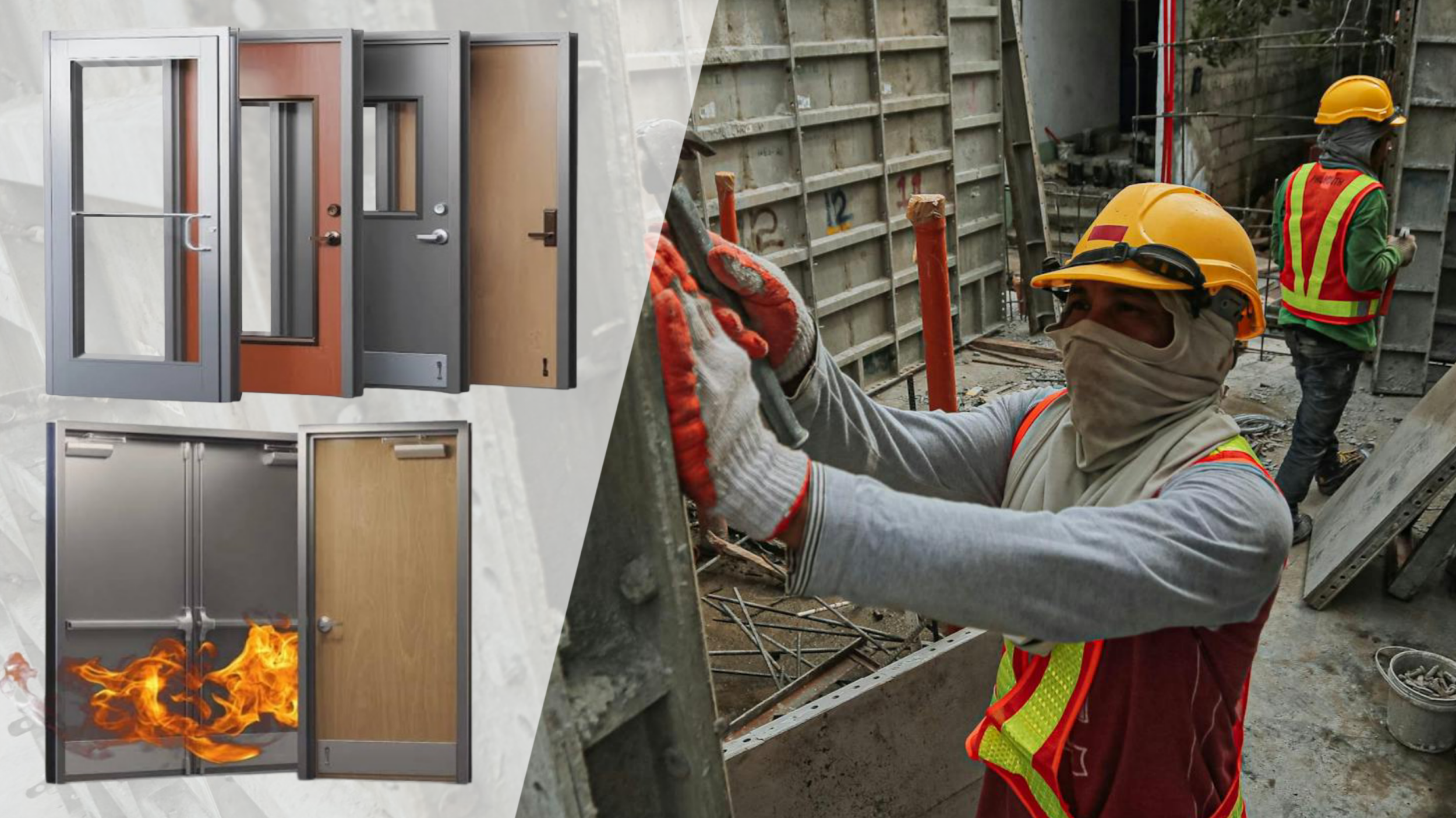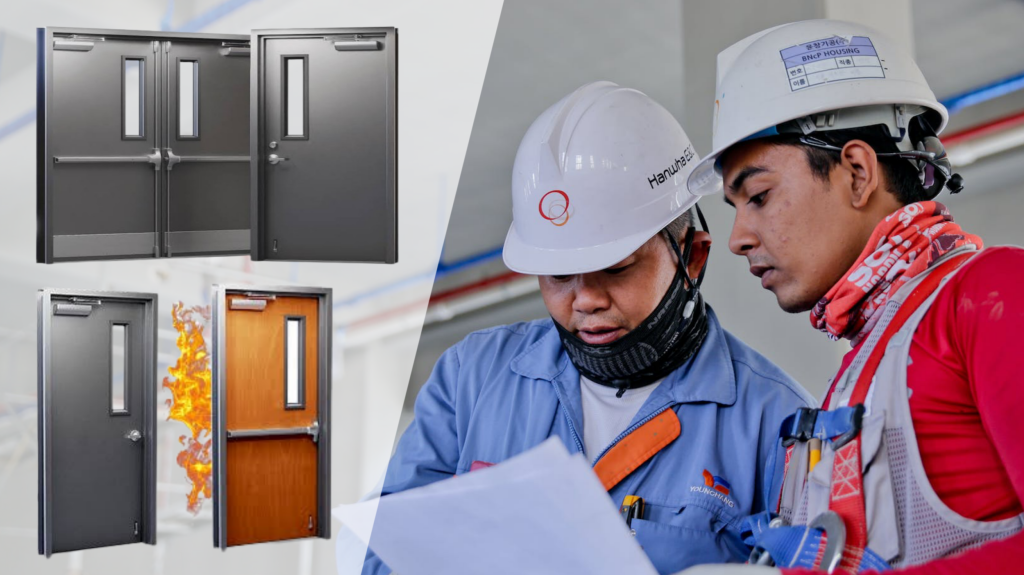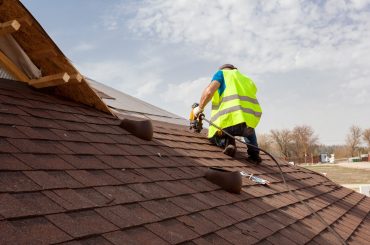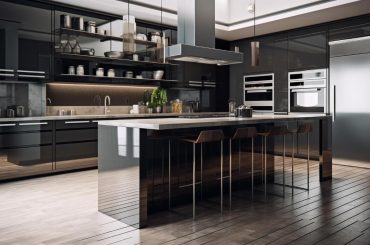Table of Contents
In any construction, safety is paramount, and fire safety measures play an essential role in safeguarding lives and assets. Fire doors are an imperative part of those measures, presenting a barrier towards the unfolding of fire and smoke. In this article, we will delve into the significance of choosing the right 30-minute fireplace door and body, know-how their type, and ensuring maximum safety.
Understanding the fire doors
Fire door ways are particularly designed to withstand hearth for a unique duration, generally categorized in terms of mins. A 30-minute hearth door is one that can resist the passage of a fireplace for at least half-hour, giving occupants valuable time to evacuate and emergency responders an opportunity to govern the scenario.
The role of frames
Choosing the proper frame is as essential as choosing the suitable door. Frames provide structural help to the door and contribute notably to the general effectiveness of the fireplace barrier. It is important to make certain that the frame complements the door’s fireplace resistance rating.
Classification of fire doors
Fire doors are categorized based totally on their fireplace resistance ratings, denoting the duration they are able to face up to the passage of fire. Common classifications, including 20, 30, 60, and 90 mins, cater to various applications, making sure most fulfilling safety for unique environments.
20 minute fire doors
Striking a balance in residential safety designed for areas with low fire threat, including residential homes, 20-minute hearth doors offer primary but essential protection. Ideal for spaces in which a shorter period of fireplace resistance is sufficient, these doorways are decided on based on the specific requirements of the area, making sure a balance among protection and functionality.
Use applications: Common packages of 20-minute fireplace doors include bedrooms, hallways, and areas within residential buildings wherein occupants take advantage of a balance between safety and sensible capability.
30 minute fire doors
A flexible desire providing a slight level of protection, 30-minute hearth doors are appropriate for various settings. Widely used in residential homes, small workplaces, and spaces wherein occupants require a vital window of time for evacuation, these doors provide a further 10 mins of fire resistance as compared to their 20-minute counterparts.
Use applications: Residential buildings, small places of work, and regions with mild fireplace threat benefit from the versatility of 30-minute fire doors, making sure occupants have sufficient time for safe evacuation.
60 minute fire doors
Suited for areas with a higher fireplace hazard, 60-minute fireplace doors offer greater protection. Commonly located in business homes and large offices, those doorways are vital in which containing a fire for an extended period is essential. The robust fireplace barrier they offer makes them ideal for packages with annoying heightened safety measures.
Use applications: Commercial buildings, larger places of work, and regions with increased fire danger enjoy the extended safety provided by way of 60-minute hearth doors, making sure a more extensive defense in opposition to ability hearth risks.
90 minute fire doors
The highest type typically utilized in commercial and industrial settings, 90-minute fireplace doors offer unparalleled extended protection. Essential in areas wherein containing a hearth for a greater extended period is vital, these doors offer a more secure evacuation window and allow for more time for firefighting efforts.
Use applications: Industrial settings, manufacturing centers, and regions with the best hearth threat benefit from the comprehensive safety provided by ninety-minute fire doors, ensuring a sturdy protection towards capacity fire emergencies.
Fire doors protection
Fire doorways are an essential element of a building’s passive fire protection system, gambling a vital role in preventing the unfolding of hearth and smoke. Their number one reason is to compartmentalize hearth, confining it to specific areas and permitting occupants precious time to evacuate appropriately. The effectiveness of fire doorways in imparting protection hinges on various factors:
Fire resistance ratings
Fire doors are categorized primarily based on their hearth resistance rankings, denoting the length they are able to withstand the passage of fire. Ratings usually variety from 20 to ninety minutes. Selecting doors with appropriate rankings ensures they are able to face the particular fireplace risks associated with extraordinary areas of a construction.
Material selection
Fire doorways are created from diverse substances, including timber, metallic, and composite substances. The desire of cloth impacts the door’s ability to face up to hearth. Each cloth has its advantages and considerations, and the selection ought to align with the door’s meant use and the overall hearth protection strategy of the construction.
Door frames and seals
The safety furnished by fireplace doors is not completely attributed to the door leaf however also is based on the integrity of the frame and seals. A properly-equipped frame and nicely functioning seals make a contribution to the door’s common effectiveness in preventing the passage of smoke and flames.
Testing and certification
To make certain of their reliability, fireplace doorways undergo rigorous checking consistent with industry standards. Certifications from reputable agencies affirm that a door has met the specified criteria for fire resistance, smoke control, and other critical elements. Choosing licensed doors is critical for ensuring they perform as meant at some point of a hearth event.
Installation and maintenance
Correct installation is paramount for fire doors to function efficiently. Professional set up guarantees that doors, frames, and related components are aligned successfully. Regular preservation, consisting of inspections and repairs, is essential to address put-on, damage, or any problems which can compromise the door’s shielding abilities.
Door hardware
The hardware accompanying the doorways, along with closers, hinges, and latching mechanisms, need to be decided on based on compatibility and compliance with hearth safety standards. Properly functioning hardware ensures that the door operates as intended within the occasion of a fireplace.
Building codes compliance
Adhering to nearby building codes and regulations is critical for making sure the general hearth safety of a structure. Fire doors ought to meet specific necessities mentioned in those codes to offer good enough protection.

Fire doors types
Fire doors are an important factor of any construction’s fire protection approach, serving as limitations to save you the spread of fire and smoke. There are several forms of fireplace doorways, each designed to meet particular hearth resistance requirements and alertness scenarios:
Wooden fire doors
Wooden hearth doorways offer a conventional and aesthetically captivating option for numerous settings. These doors are constructed with a solid timber middle or an aggregate of timber and other substances. They are commonly used in residential and business spaces where each capability and visual attraction are crucial.
Steel fire doors
Renowned for their durability and electricity, metal fire doors are suitable for high-site visitors and excessive-chance areas. These doors are made out of steel sheets or a metallic core, imparting robust fireplace resistance. They are often utilized in commercial settings, business homes, and areas with elevated hearth hazards.
Glass fire doors
Combining transparency with fireplace resistance, glass fireplace doors are designed for regions where visibility is crucial. These doorways are geared up with fireplace-rated glass panels that hold their integrity at some stage in a fire. They are typically determined in places of work, public homes, and areas where aesthetics and protection converge.
Composite fire doors
Composite fireplace doors are constructed with a mixture of substances, consisting of wooden, metallic, and different fireplace-resistant additives. This layout complements both energy and hearth resistance, making them versatile and suitable for diverse packages. Composite doors are regularly used in both residential and industrial settings.
Double-leaf fire doors
Double-leaf fire doors include two impartial door leaves that perform collectively. These doorways are suitable for wider openings and regions with excessive foot site visitors. The design ensures that both leaves offer the desired hearth resistance, making them sensible for huge spaces like shopping department shops and public meeting areas.
Sliding fire doors
Sliding fireplace doors provide a space-saving solution whilst retaining powerful fireplace safety. These doorways slide horizontally, making them ideal for areas with restricted clearance. They are commonly utilized in healthcare facilities, business settings, and areas wherein performance is paramount.
Rolling fire doors
Rolling fireplace doors are designed to store area and provide quick closure in massive openings. Commonly utilized in commercial settings, warehouses, and storage facilities, those doors roll up and down, providing fireplace safety at the same time as accommodating the need for efficient space usage.
Understanding security doors
A safety door is a specialized entry barrier designed to support a constructing’s defenses in opposition to unauthorized access and capability security threats. These doorways, crafted from strong substances like metallic or aluminum, characteristic strengthened frames and superior locking mechanisms. With various classifications catering to precise wishes, protection doorways prioritize energy, aesthetic enchantment, and may include superior get entry to manipulate technology. Serving as a primary deterrent in opposition to compelled access, safety doors make contributions significantly to growing a steady environment for both residential and commercial spaces.
Classification of protection doors
Security doorways play a pivotal function in safeguarding homes from unauthorized get right of entry to and security threats. Their effectiveness is frequently categorized primarily based on numerous capabilities, layout elements, and supposed applications. Here are classifications of protection doorways, every catering to particular security desires:
Commercial security doors
Features: Engineered for better site visitors and potential protection risks, industrial security doors are built with durability in mind. They generally feature sturdy locking structures, heavy-obligation substances, and may consist of superior get entry to control technology.
Applications: Widely used in storefronts, workplaces, and commercial establishments in which security and sturdiness are important.
High-security doors
Features: High-protection doors are designed to withstand advanced threats. These doorways regularly encompass features which include ballistic resistance, strengthened cores, and sophisticated get entry to manipulate structures.
Applications: Deployed in government centers, banks, and different excessive-chance environments wherein the safety against state-of-the-art security threats is paramount.
Fire-rated security doors
Features: Combining hearth resistance with safety, fireplace-rated safety doors are engineered to satisfy particular fire protection standards. They feature bolstered materials that provide safety towards both the fireplace and unauthorized admission to.
Applications: Essential in locations in which fire protection regulations call for compliance, inclusive of commercial settings and buildings with high occupant hundreds.
Bullet-resistant security doors
Features: Bullet-resistant protection doorways are constructed with materials capable of withstanding ballistic affects. They provide varying levels of protection in opposition to firearms.
Applications: Deployed in important environments where the threat of armed attacks is high, such as authorities buildings, embassies, and high-profile facilities.
Electronic security doors
Features: Integrating superior era, digital protection doorways encompass electronic locks, keyless access structures, and may be a part of a broader protection infrastructure.
Applications: Commonly utilized in excessive-tech security environments, facts facilities, and facilities wherein electronics get entry to manage is critical.
Sliding security doors
Features: Sliding safety doors offer space-efficient solutions, sliding horizontally while keeping robust security features consisting of strengthened materials and stable locking mechanisms.
Applications: Suitable for both residential and business spaces in which a confined area requires an efficient but stable front answer.
Access-controlled security doors
Features: Access-managed protection doors contain sophisticated access structures, allowing access most effective to legal individuals. These doorways may include biometric scanners, key cards, or PIN code access.
Applications: Commonly used in secure facilities, data centers, and areas requiring strict admission to control.
Security doors protection
Security doors play a pivotal role in safeguarding properties with the aid of presenting a sturdy protection towards unauthorized get admission to and potential safety threats. The key features contributing to their protective competencies encompass:
Durable construction
Security doors are created from long lasting materials inclusive of metallic, aluminum, or composite materials, ensuring resilience in opposition to physical force and put on. The robust construction is foundational to their potential to withstand intrusion tries.
Reinforced frames
The frames of security doorways are frequently reinforced to feature structural power. This reinforcement prevents the door from being without difficulty kicked in or pried open, improving universal resistance in opposition to forced access.
Multiple locking points
An important thing of protection doorways is the inclusion of multiple locking points. This feature distributes force flippantly across the door, making it difficult for intruders to breach. Advanced locking mechanisms, along with deadbolts and anti-snap locks, further make contributions to their shielding abilities.
Impact resistance
Some protection doors are designed to offer impact resistance, capable of withstanding heavy blows or tries to break through with tools. This function is in particular valuable in environments wherein physical assaults are a full-size concern.
Security glass options
Certain security doorways contain laminated or tempered safety glass. This now not most effective keeps transparency however also gives an additional layer of protection in opposition to smash-ins. The glass is designed to resist shattering, making forced entry more hard.
Weather resistance
Security doors are regularly treated or coated to face up to corrosion and damaging climate conditions. This guarantees the door’s long-time period sturdiness and continues its protective features, specifically in outdoor or exposed locations.
Advanced access control
Incorporating advanced get right of entry to manipulate technologies, some protection doors function digital locking structures, biometric scanners, keyless entry, or integration into broader security structures. These technologies decorate and manipulate over who can input the premises.
Fire-rated security options
For comprehensive safety, positive security doorways come with fire-resistant features, meeting specific hearth safety standards. These doors provide both protection and the ability to withstand a fireplace, making them appropriate for numerous high-chance environments.
Steel, fire, security doors: building resilience with quality materials and rigorous testing
Materials for construction:
Steel doors
Material: High-high-quality metallic is usually used for the development of metallic doors. The thickness and grade of the metal make contributions to the door’s electricity and durability.
Fire doors
Core material: Fire doors may have a core made of substances like mineral wool, vermiculite, or other hearth-resistant materials. The center affords insulation against warmth and contributes to the door’s fire-resistant residences.
Security doors
Material: Security doors are often made out of strengthened metallic, combining power and durability. Some doors may additionally comprise extra substances, inclusive of laminated glass for visibility and effect resistance.
Surface treatments
Steel doors
Galvanization: To beautify corrosion resistance, metallic doors are regularly galvanized. This includes making use of a defensive zinc coating to the steel surface, stopping rust and lengthening the door’s lifespan.
Fire doors
Intumescent coating: Fire doorways may feature intumescent coatings that enlarge when exposed to warmness, growing a defensive barrier and enhancing the door’s ability to withstand a fireplace.
Security doors
Greasepaint Coating Security doors typically go through cream coating, supplying an extended lasting and aesthetically appropriate end. This coating also contributes to corrosion resistance.
Testing and certification
Steel doors
Strength testing: Steel doors undergo energy trying out to make sure they meet industry standards for structural integrity. This involves assessing the door’s ability to face up to numerous forces and influences.
Fire doors
Fire resistance testing: Fire doors are fastidiously examined for their capacity to withstand hearth. This includes evaluating the door’s performance in specific fireplace conditions, along with exposure to high temperatures, flames, and smoke.
Security doors
Greasepaint Coating Security doors typically go through greasepaint coating, presenting an extended lasting and aesthetically applicable finish. This coating also contributes to erosion resistance.
Additional testing considerations
Common testing standards
Doors can be tested consistent with enterprise standards consisting of UL (Underwriters Laboratories), ANSI (American National Standards Institute), or EN (European Standards), depending on the area and supposed use.
Quality assurance
Regular first-rate manipulate checks ensure that each door meets the desired standards. This includes monitoring manufacturing tactics, examining substances, and carrying out overall performance exams.
In precis, the construction of steel, fireplace, and protection doors entails the use of specific substances, surface treatments to decorate performance and sturdiness, and rigorous trying out tactics to make certain compliance with protection and protection requirements. These measures collectively make a contribution to the effectiveness of those doorways in imparting protection and assembling the diverse needs of various packages.





